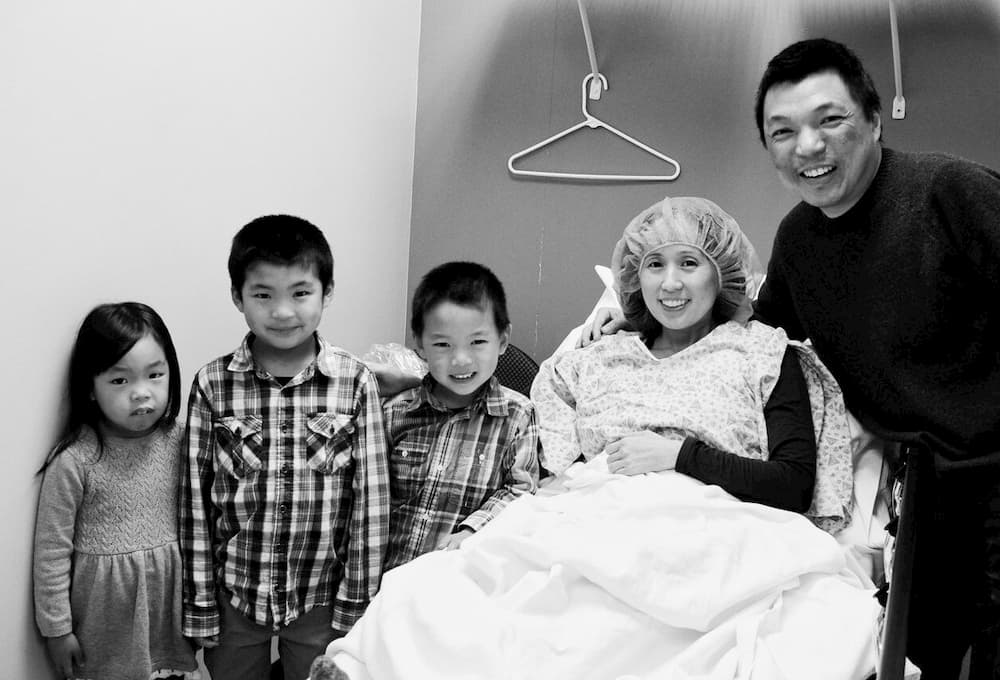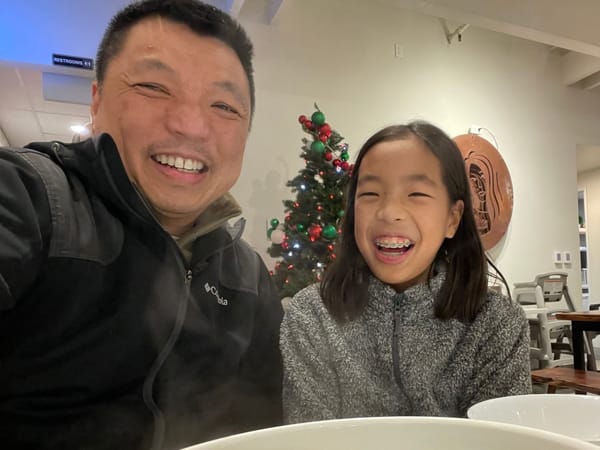Chance at Life — An Embryo Adoption Story
The five of us boarded a plane together for the first time. It wasn’t a typical family vacation. We flew across the country to give an embryo a chance at life.

One Million Lives Worth Saving
Many couples struggle with infertility. Some try in-vitro fertilization where eggs extracted from a woman’s ovaries are combined with sperm. A few days later, the best embryo(s) are transferred into the woman’s uterus. Couples hope the embryo implants and the pregnancy succeeds.
Extra embryos are frozen. When couples feel their family is complete, some destroy the leftover embryos; others keep theirs cryopreserved. Today in the United States, over 1 million frozen embryos face an uncertain future.
Every embryo is a human life; they are lives worth saving. I wanted to help, but entering my 40s with three children, one still in diapers, I didn’t think we could have another child. Embryo adoption seemed far-fetched.
But in January 2017, my heart changed, so we researched more about embryo adoption.
Preparing for Embryo Adoption
We searched the internet to find out more about embryo adoption. We read stories and listened to testimonies. As we learned more about the embryo adoption process, our interest grew.
We submitted our application to the National Embryo Donation Center (NEDC) in hope of a prompt evaluation to determine if my wife could host an embryo. To our disappointment, we had to wait nearly 4 months.
Finally, on June 7th, we flew to Nashville. We drove another 200 miles to Knoxville. After a late dinner, we rested overnight at a local hotel.
The next morning, the doctor confirmed that my wife was an ideal candidate for embryo transfer. We ate a quick meal in a parked car at Sonics Burgers before driving back to Nashville to catch our return flight home.
Lingering Doubts
I had doubts as we flew home that evening. I worried about money. I feared added marital strain. I dreaded more years of parental exhaustion.
Furthermore, there were medical considerations. My wife would need high doses of oral and injectable hormones which had temporary and permanent side effects.
My wife, however, was sure. She wanted to adopt, and she wanted another pregnancy. Embryo adoption satisfied both desires. She didn’t waver, even when I reminded her of the risks.
We completed an arduous home study. The social worker asked detailed questions about our finances, health, marriage and family to determine if we were ready to adopt. She made sure we understood to what we were committing. As part of our education requirement, we read more articles on embryo adoption, as well as open adoptions and conspicuous families (adopting a child of a different ethnicity).
Confidence slowly overcame doubt, so we took our next step—finding a match.
The Match Process
Like traditional adoption, embryo adoption can be open or closed. Closed adoptions are anonymous. Adoptive and biological parents keep their identities hidden.
We chose an open adoption. We created a profile which included a detailed description of our family. We reviewed the profiles of couples looking to give away their extra embryos. After careful review and thoughtful prayer, we chose two couples. The embryos from the second couple would be our backup should the embryos of the first couple not survive the thawing process.
Through mediation by another social worker, both couples accepted us. We signed paperwork in October on our 8th wedding anniversary. Our embryo adoption was finalized. The final step was the transfer.
The Embryo Transfer
One month earlier, my wife started birth control pills to prepare her body. She transitioned to oral estrogen followed by lupron and progesterone injections. One week before the transfer, she completed blood tests and an ultrasound to confirm she had properly responded to the hormones.
On a November morning, we took the identical flight we had taken in June. This time, we brought our three children who had never flown; each understood the trip’s significance. “Tomorrow, a doctor will place tiny babies inside mom’s tummy.”
While the kids and I sat in the waiting room, the doctor transferred three embryos into my wife’s uterus. Afterward, she spent a full day on bedrest. Two days later, we flew home. Every night thereafter, we prayed with our children that God would preserve at least one embryo’s life.
Thanksgiving weekend, we took our first pregnancy test. It was positive. But subsequent tests revealed none of the embryos had survived. We stopped the progesterone shots. The embryo transfer had failed.
No Regrets.
The success rate of embryo transfers is about 40%. Even so, I was heartbroken. I didn’t expect to feel so sad. Despite all our effort, waiting, and prayer, we were left empty-handed.
The story should not end like this, but I was not the author. It was God.
In the early 1900s, young William Borden inherited his family fortune. But leaving his wealth and family business, he attended seminary to become a missionary. Before starting his missionary work to the Gansu people in China, he sailed to Egypt to learn Arabic. There he contracted spinal meningitis. While laying ill, he wrote in his Bible, “No regrets.” One month later, he died.
Like Borden, what we tried to do was good. God’s providence is perfect, so we had no regrets.
Since we adopted two sets of embryos, we felt led to try one more time.
Second Chance at Life
In early 2018, our family returned to Knoxville for a second embryo transfer. We were more relaxed, extending our vacation an extra week to do a road trip through four states. I felt no anxiety because God was in full control.
Two weeks later, our first serum pregnancy test was positive. Four weeks later, our entire family squeezed into a small exam room where the doctor performed our first ultrasound. We saw a heartbeat. One embryo had survived.
Before he was transferred into Janice, our son had been frozen for 12 years. I never imagined a 12 year old embryo could continue life inside my wife’s womb. On October 6, 2018, Janice gave birth to a healthy baby boy. I was awed, relieved, and grateful.
His birth, like all others, is a miracle.
My Adoption
Like my newborn son, I also was adopted. While I was helpless in my sin, Jesus laid aside his divine prerogatives and became a baby. He lived the perfect life I could not live. He died as my substitute to pay my penalty. He rose from the dead, proving he satisfied God’s wrath and overcame sin’s power.
When we trust in Jesus as Lord and Savior, our sins are placed on him. God credits us his righteousness. Instead of eternal hell, our Heavenly Father gives us eternal life as his adopted.
When I hold my son in my arms, I remember what it cost to adopt him and give him a chance at life. But it pales in comparison to the cost Christ paid to adopt me.
| Listen on Apple Podcasts | Listen on Google Podcasts |
|---|




